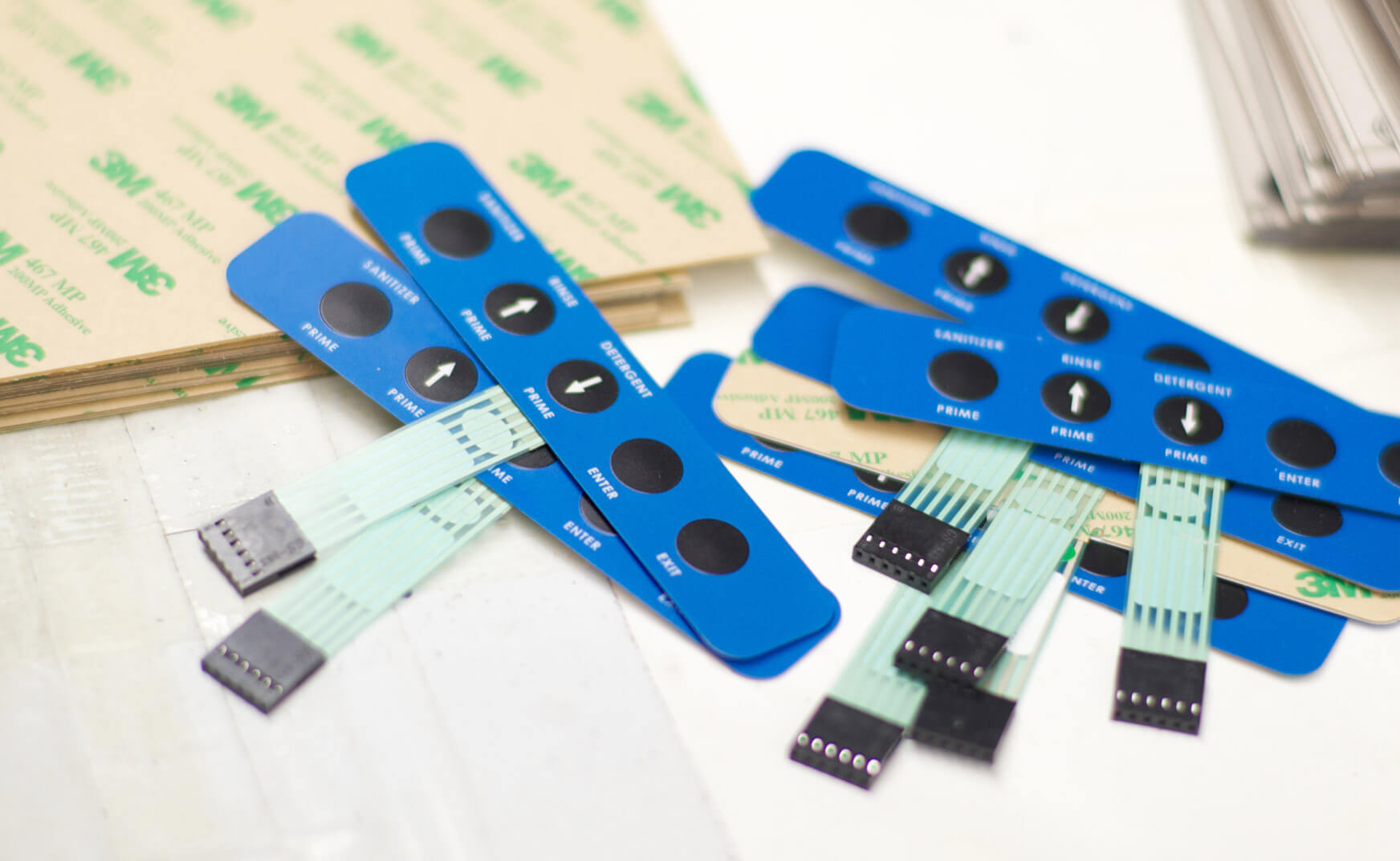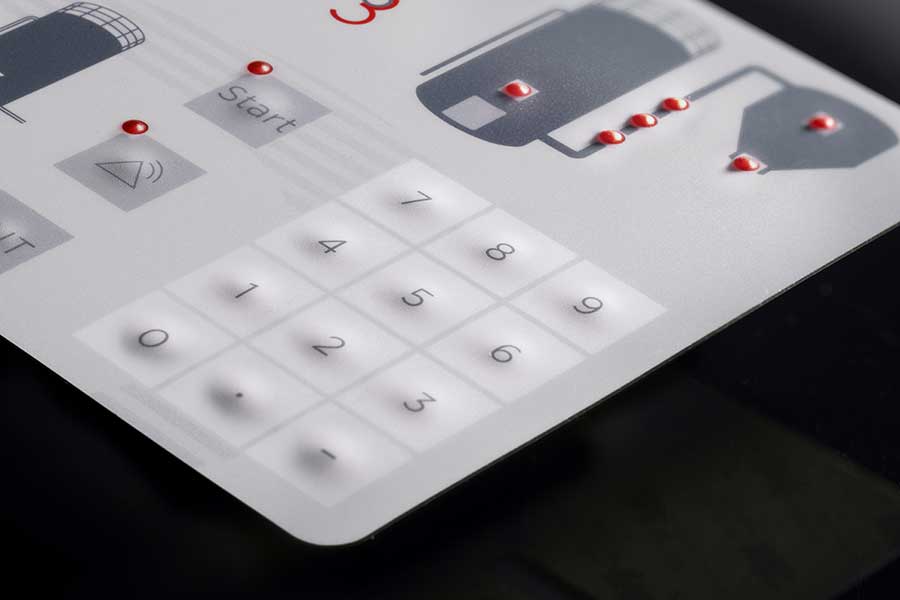Membrane Switches: A Affordable Solution for Advanced Control Systems
Membrane Switches: A Affordable Solution for Advanced Control Systems
Blog Article
Membrane Layer Switch Technology: The Key to Reliable and Cost-Effective User Interfaces
Membrane button technology has actually emerged as an essential part in the layout of individual interfaces, giving both dependability and cost-effectiveness across a diverse range of applications. As we check out the complex advantages of membrane layer buttons, their capacity for advancement increases concerns concerning future applications and developing patterns.
Recognizing Membrane Switch Over Modern Technology
Membrane switch modern technology is a commonly made use of interface option in various electronic devices, offering a seamless mix of capability and style. This modern technology incorporates several layers of products, generally consisting of a graphic overlay, spacer layer, and a circuit layer. The graphic overlay presents the interface aspects, while the spacer layer separates the circuit layer from the overlay till a user activates a button.
When pressure is applied to the overlay, the circuit layer finishes the electric circuit, sending out a signal to the device. This mechanism permits for various arrangements, including responsive comments and backlighting options, improving customer communication. Membrane layer buttons are generally manufactured using resilient materials such as polyester or polycarbonate, ensuring longevity and resistance to environmental variables like moisture and dirt.
The versatility of membrane layer switches allows their application in diverse markets, including medical gadgets, customer electronics, and industrial controls. Their small design permits integration into space-constrained atmospheres, offering a reliable interface without compromising aesthetic charm. Comprehending the details of membrane layer switch technology is essential for suppliers and developers seeking to create trustworthy and efficient human-machine interfaces.
Key Benefits of Membrane Buttons
While numerous interface services exist, membrane layer switches offer distinctive advantages that make them a preferred choice in various applications. Among the main advantages is their longevity; membrane layer switches are designed to endure severe ecological problems, consisting of dampness, dirt, and temperature changes, ensuring long-lasting efficiency. This resilience significantly lowers the demand for regular substitutes, thereby reducing total maintenance costs.

In addition, membrane buttons are light-weight and portable, making them appropriate for applications where space is limited. Their low-profile layout adds to a streamlined look without jeopardizing functionality.
Cost-effectiveness is additionally a significant benefit, as the manufacturing process for membrane layer switches over often tends to be more economical contrasted to traditional mechanical switches. This cost, integrated with their dependability and simplicity of installation, settings membrane layer switches over as a functional solution for a vast array of industries seeking reliable and efficient user interfaces.
Applications Across Various Industries
Just how do membrane buttons adapt to the varied demands of numerous markets? Membrane layer button innovation is progressively recognized for its convenience, making it appropriate for a variety of applications across several sectors. In the clinical area, membrane layer buttons are made use of in diagnostic equipment and patient surveillance devices, where their toughness explanation and simplicity of cleaning are essential for keeping health criteria. The automotive market uses these buttons in dashboards and control board, using a structured aesthetic while ensuring easy to use procedure.
In customer electronic devices, membrane buttons provide a compact solution for push-button controls and home appliances, improving customer experience with user-friendly layout. Additionally, the commercial industry leverages membrane layer switches for equipment control board, gaining from their resistance to severe settings, such as moisture and dirt.
Army and aerospace applications likewise utilize membrane switches for their dependability and ability to withstand severe problems, making sure operational efficiency in critical scenarios. Moreover, the food and drink market adopts these switches for automated systems, where sanitation and simplicity of procedure are paramount. Ultimately, membrane layer switches are tailored to satisfy the one-of-a-kind needs of each market, proving their necessary role in modern-day technology interfaces
Style and Customization Choices

In the realm of membrane switch innovation, style and modification options play a pivotal role in improving functionality and individual communication. These buttons can be customized to satisfy details operational demands and aesthetic choices, making them flexible components in numerous applications.
Among the primary personalization choices is the design of the button itself, which can be designed to fit unique individual interfaces and ergonomic factors to consider. By changing the form, size, and setup of buttons, producers can create intuitive layouts that promote simplicity of usage. Furthermore, the consolidation of this page various shades and visuals overlays enables branding and boosted visibility, guaranteeing that customers can rapidly identify functions.
In addition, membrane layer switches can be engineered with different responsive responses mechanisms, such as raised switches or distinct clicks, to boost the individual experience. Different products can additionally be picked for resilience and ecological resistance, dealing with elements such as dampness, temperature level changes, and chemical direct exposure.
Inevitably, the considerable layout and personalization choices offered in membrane layer button innovation encourage businesses to develop tailored services that not only satisfy practical needs yet likewise line up with their branding and operational needs.

Future Patterns in Membrane Layer Switches
As membrane layer switch technology continues to advance, future patterns are significantly concentrated on improving customer experience and incorporating innovative capabilities. One considerable trend is the integration of touch-sensitive and capacitive innovations right into typical membrane switches. This advancement enables even more intuitive user interfaces, offering tactile responses while preserving a sleek style.
An additional emerging fad is the usage of eco-friendly materials, driven by the expanding demand for lasting production practices. Manufacturers are looking for to minimize their carbon footprint by making use of recyclable substratums and low-impact inks, straightening with worldwide sustainability goals.
In addition, the increase of the Internet of Points (IoT) is prompting the consolidation of wise functions into membrane layer switches. Boosted connection alternatives will allow devices to interact with each other, permitting smooth assimilation into wider systems.
Furthermore, advancements in printing modern technologies, such as digital printing, are allowing for better design flexibility site and personalization. This allows suppliers to produce complex designs and dynamic shades cost-effectively.

Verdict
In conclusion, membrane layer button technology stands for an important innovation in user interface layout, providing considerable advantages in longevity, customization, and cost-effectiveness. As improvements continue to arise, especially in touch-sensitive interfaces and lasting materials, the possibility for membrane layer switches to improve customer experience and functionality remains promising.
Report this page